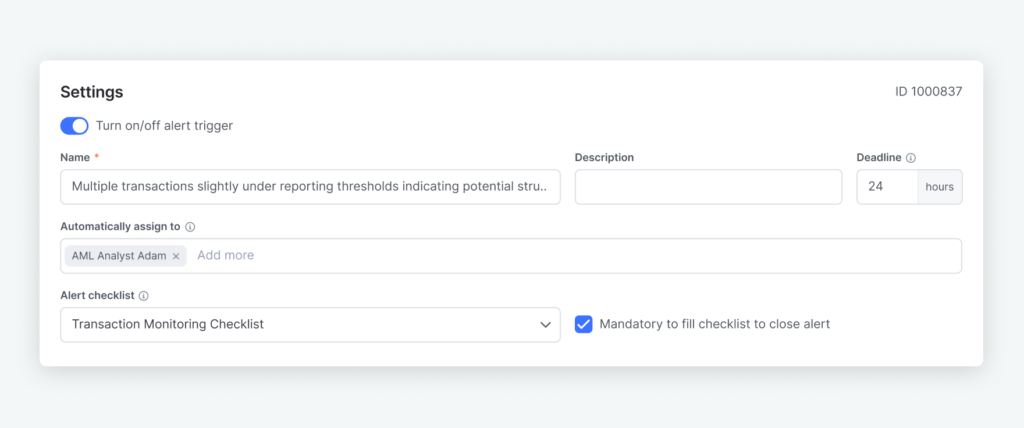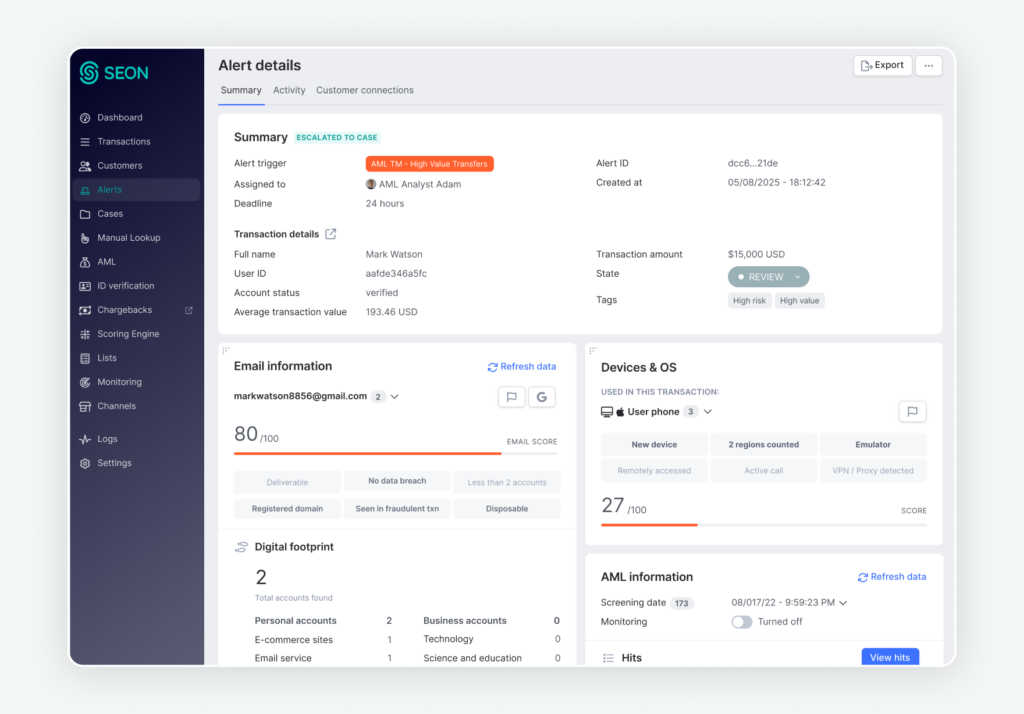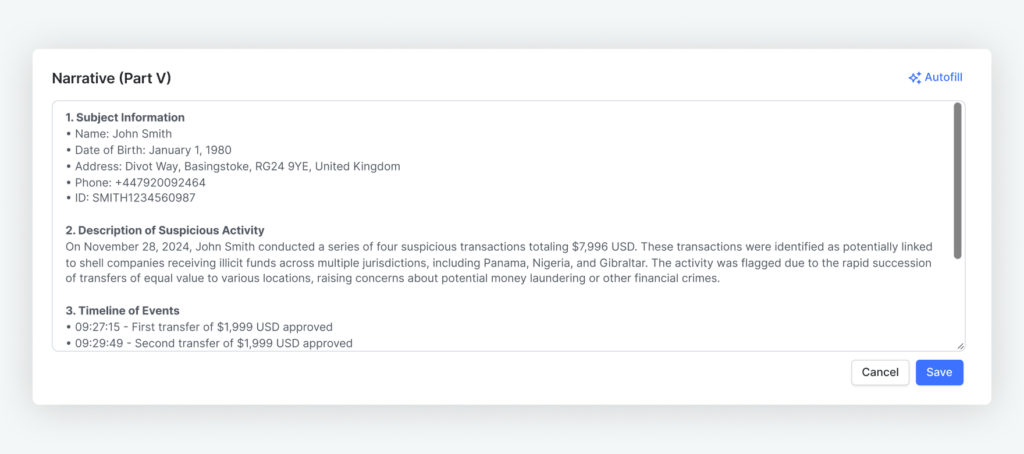As regulatory pressure mounts due to the convergence of economic, technological, geopolitical, and reputational factors, anti-money laundering (AML) compliance has become a frontline priority. The stakes are no longer limited to fines and penalties: non-compliance today erodes customer trust, wreaks havoc on brand reputation, and can significantly disrupt operations.
Recent headlines paint a clear picture — in the past year alone, TD Bank was flagged in a $1.2 billion money laundering investigation, MGM Grand and The Cosmopolitan, two popular Las Vegas casinos, were hit with fines for AML failures and Robinhood, the US-based trading platform, faced enforcement actions over lackluster compliance controls.
Staying audit-ready in the modern environment requires more diligence, especially when trying to keep pace with shifting expectations and increasingly ubiquitous and complex fraud and money laundering tactics. Compliance teams need to balance accuracy, agility and scalability in real time — anything less invites risk.
The Challenges of Regulatory Reporting
Regulatory reporting is a high-stakes balancing act between accuracy and speed. Businesses are expected to capture vast volumes of transaction data, analyze it in real time and against past transactions and submit reports that meet the specific formatting and content rules for the applicable jurisdictions. And for global businesses, teams need to understand different reporting requirements for each regulator. Missed deadlines or inaccurate filings can yield fines, reputational damage and harsh regulatory scrutiny.
Many sophisticated fraud and money laundering tactics capitalize on the limitations of legacy systems, which lack the scalability and adaptability to keep up, often processing data in batches, while bifurcating risk views in ways that disallow analysts to digest the whole picture at once. Teams rely on siloed data sources, messages and spreadsheets in addition to rigid processes that make it difficult to pivot when requirements evolve.
Worse still, reconciling compliance with customer experience adds an extra layer of friction. Additional checks, delayed or blocked transactions and long verification processes increase the chances of customer churn. Staying compliant shouldn’t mean slowing down your business, but for many, that’s exactly what happens.
Optimizing for Investigations
When alerts spike or regulators come knocking, your team needs answers fast. But traditional AML systems can make it difficult to get to the root of the problem. As analysts are forced to manage and collect data from multiple platforms and manually compile evidence, precious time is slipping away, essentially buying time for money laundering to continue to escalate.
Speed and accuracy aren’t mutually exclusive, but they do require smarter tooling. Centralized risk signals enriched in real time allow compliance teams to investigate more efficiently and respond faster to emerging threats. With dynamic risk scoring and clear audit trails, investigators can quickly understand what triggered an alert, what’s changed in a customer’s behavior and whether the case needs escalation.
Automating repetitive steps (like data aggregation, risk classification and autofilling report form fields) frees up analysts and money laundering reporting officers’ (MLROs) time to focus on tasks that require their expertise and oversight. Instead of writing reports from scratch or hunting for compliance-relevant details, teams can focus on the investigation at large and ensure that filings are both timely and defensible.
Don’t let manual processes slow you down. Equip your team with the tools to investigate smarter, report faster and stay ahead of the game with SEON..
Speak with an Expert
How to Create Speed
Cut through complexity with automated, real-time oversight and flexible controls in record time. From pre-KYC checks to automated regulatory filing, SEON supports fraud and compliance teams every step of the way.
Automate Alerts to the Right Analysts
Ensure every alert is routed to the right team member based on expertise, role or workload, so nothing gets missed and reviews happen within the required regulatory timeframes

Investigate Faster with Context in One Place
Bring together AML data and proprietary fraud signals in a single view to build rich, contextual profiles, helping teams quickly make informed decisions without switching tools.
Guide investigations with Checklist-Based Workflows
Ensure analysts follow the right procedures every time with customizable checklists that align with internal policies and regulatory expectations, improving consistency and audit readiness.

Accelerate Report Generation with AI
Speed up reporting with AI-assisted SAR narratives and smart autofill that pre-populates key fields based on case data, reducing manual input and the risk of error.

File Reports Directly to Regulators
File SARs, CTRs and Form 8300s directly to regulators from the same platform you conduct your investigations, with built-in status tracking, audit trails and secure recordkeeping.
With SEON, you can reduce manual work, adapt to changing regulations and stay focused on real risks — not paperwork.
Build Efficiency From Within
Improving efficiency doesn’t require more tools — it starts with connecting the right processes. Transformation starts internally, and the first step is taking a hard look at your current operations to uncover the biggest gaps in data across risk and compliance teams and surface opportunities for improvement. By collecting contextual customer data and identifying where processes can be automated, you create a foundation for smarter investigations and timely regulatory reporting.
Sources:









